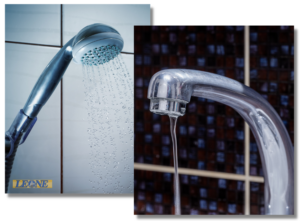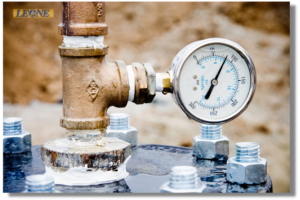
Ending the day with a refreshing shower is satisfying and it relieves all the day’s stress. But this moment can be spoiled with a trickle of water coming out from your shower due to low pressure. This issue does not only affect your shower but also the kitchen and the toilet. If you are getting a few drips of drinking water from your kitchen faucet or your toilet tank is slowly filling up after you flush, then it’s telling you that the water pressure has dropped.
Why Are We Having Low Water Pressure?
The most common reasons for your water pressure to drop are:
- Clogged pipes (due to mineral deposits).
- Corroded pipes.
- Blocked water meter valve or damaged main city water supply pipe.
- High water demand.
- Malfunctioning pressure regulator.
- Tree roots invasion on pipes.
There are practical solutions to address the issue. Let’s look at some of the ways to remedy the problem.

How to Increase Your Home’s Water Pressure
Test the city water pressure.
First, perform a test by using a
water pressure gauge connected to the hose. What you will do is screw the gauge to the hose faucet. For an accurate reading, make sure that your home’s water supply and
(water-using) appliances are all turned off. Normal results should be between 40 and 80 psi for residential use. If you are getting below the normal psi reading, then it’s relatively low. If you find similar results with your neighbors, then it’s a citywide issue. Contact your city’s municipal water supply to inspect and fix the problem.
Installing a pressure booster pump.
You can boost the pressure by installing a booster pump. This is ideal if you are on a public water supply and frequently experiencing low pressure.
Adjusting the pressure-reducing valve.
If your home’s main water supply has a pressure-reducing valve, then it may need a bit of adjustment. Simply loosen the locknut on the valve so it can increase the pressure.
Check your faucet and shower head for clogs.
Mineral deposits may build up over time that clog your faucet and shower head. These clogs can decrease the pressure. You can fix the issue by using simple home remedies. You can detach the shower head and faucet then soak them in a container of white vinegar for a few hours and rinse them with water. This process will naturally dissolve the mineral deposits.
Replace corroded pipes.
The inside of the pipes becomes narrow due to pipe corrosion which prevents normal pressure. You can tell if your pipes are extremely corroded if the water coming out from the faucet is red and rusty. The best way to deal with this issue is pipe replacement.
Leave Your Low Water Pressure Concern To Us!
We understand how frustrating it can be. But we got you!
Contact us right away to make an appointment.
 Ending the day with a refreshing shower is satisfying and it relieves all the day’s stress. But this moment can be spoiled with a trickle of water coming out from your shower due to low pressure. This issue does not only affect your shower but also the kitchen and the toilet. If you are getting a few drips of drinking water from your kitchen faucet or your toilet tank is slowly filling up after you flush, then it’s telling you that the water pressure has dropped.
Ending the day with a refreshing shower is satisfying and it relieves all the day’s stress. But this moment can be spoiled with a trickle of water coming out from your shower due to low pressure. This issue does not only affect your shower but also the kitchen and the toilet. If you are getting a few drips of drinking water from your kitchen faucet or your toilet tank is slowly filling up after you flush, then it’s telling you that the water pressure has dropped.
